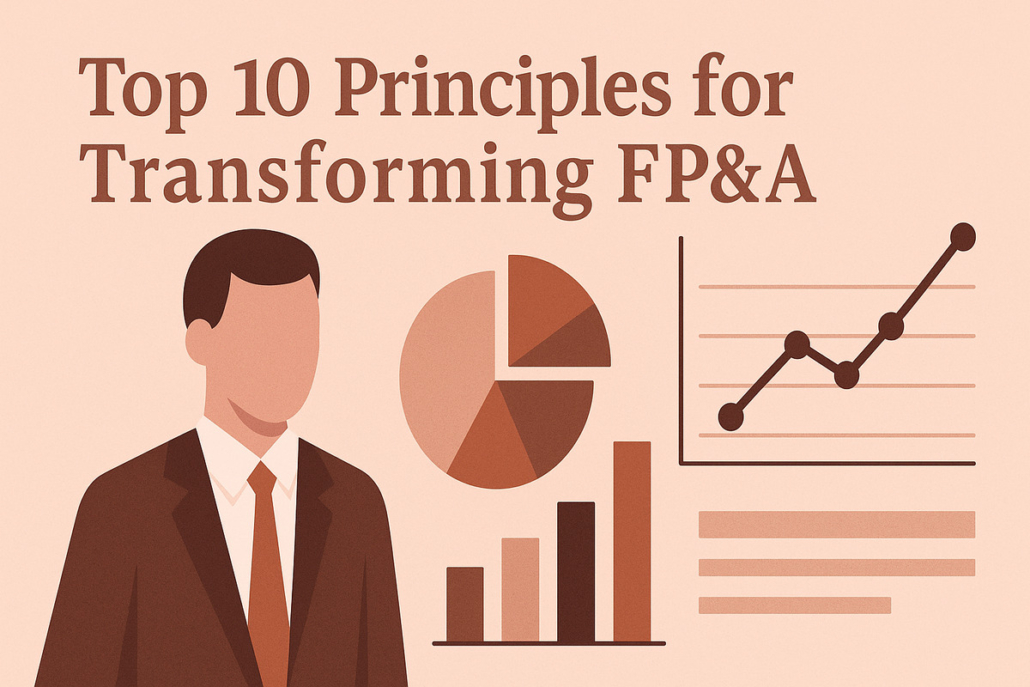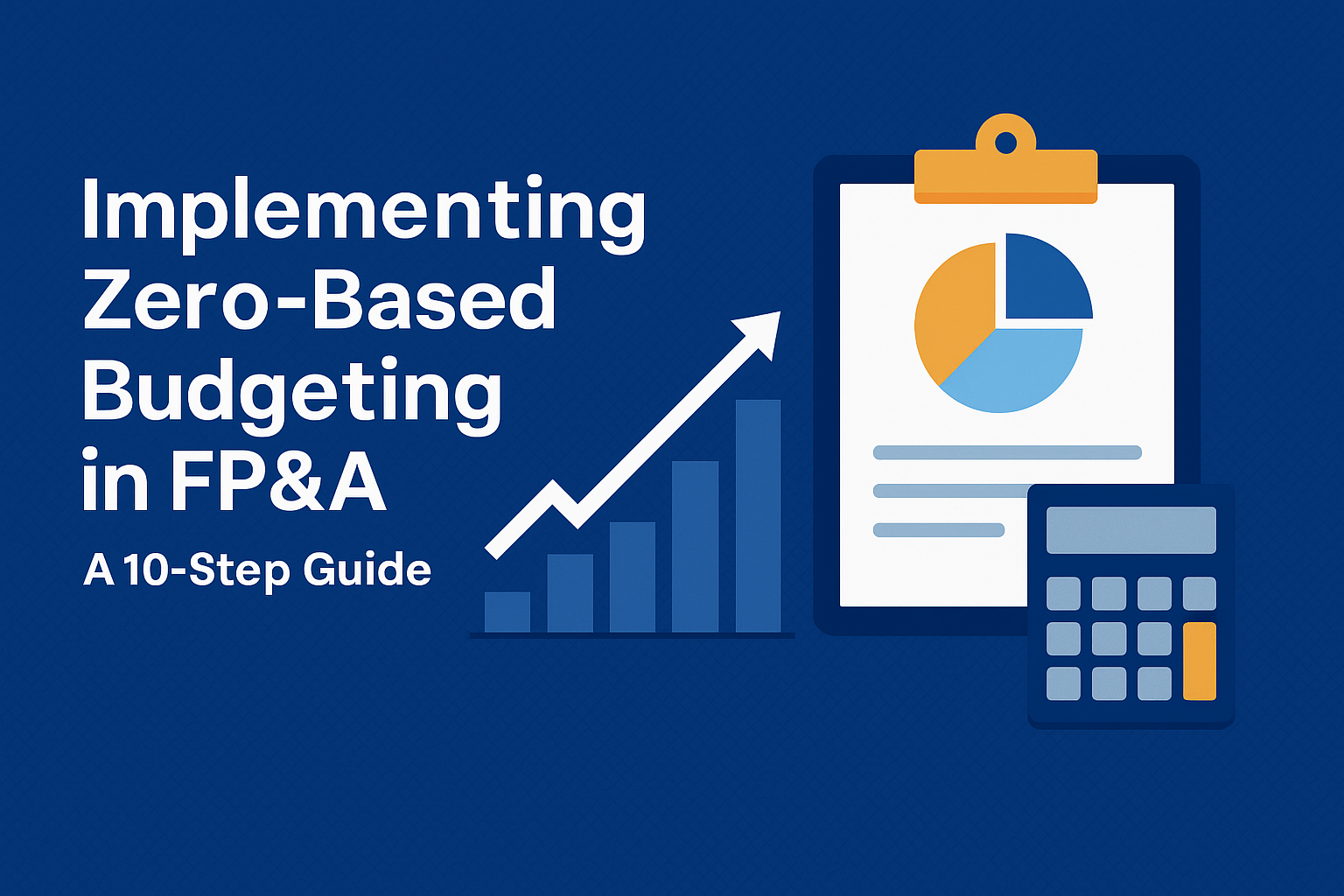Top 10 Principles for Transforming FP&A Towards Long-Term Value Creation
It’s been said a hundred times in every boardroom I’ve ever sat in: “We need to be more strategic with our planning.” Great. But what does that actually mean in a world where financial planning and analysis (FP&A) is still, in many places, little more than spreadsheet jockeying dressed in quarterly PowerPoint suits? I’ve watched teams get bogged down by noise, misaligned incentives, and legacy rituals designed to make people feel productive—not to actually build long-term enterprise value.
In this post, I’ll walk through the top 10 strategic FP&A principles that I believe—based on hard-won scars and quiet breakthroughs—can transform corporate financial planning into a long-horizon value engine. Not the kind of fluff you hear on earnings calls, but the kind that makes organizations resilient, aligned, and free from the tyranny of short-termism.

Principle 1: Kill the Budget (or at Least Loosen Its Grip)
If you’re still setting rigid annual budgets in Q4 and expecting them to hold up 10 months later, you’re doing it wrong. Budgets aren’t strategy—they’re constraints. Instead, adopt rolling forecasts and scenario planning that mirror actual market dynamics.
- Static budgets create false certainty
- Rolling forecasts build adaptability
- Scenario planning clarifies response options before crises hit
Principle 2: Shift from Reporting to Sensing
Most FP&A teams spend 70% of their time on backward-looking financial reporting and 30% explaining what already happened. Flip it. Use real-time data to sense early trends. Financial planning intelligence should be predictive, not just reflective.
- Invest in data infrastructure for real-time insights
- Build dashboards that flag leading indicators, not just lagging metrics
- Create feedback loops between operations and finance
Principle 3: Don’t Report Everything—Report What Matters
Too much financial data creates informational smog. Your job isn’t to recreate the data warehouse—it’s to distill what’s actionable. I once sat in on a monthly business review that had 115 slides. Only three changed any decisions.
Ask:
- Who is the audience?
- What do they need to know to act?
- What won’t we report—and why?
Principle 4: Build Models That Tell Stories, Not Just Numbers
A spreadsheet can show you variance. A good FP&A model explains why it happened, who it affects, and what’s likely to come next. When I started using narrative-style annotations in financial models, people finally stopped asking for more slides.
| Feature | Traditional Model | Strategic FP&A Model |
|---|---|---|
| Output | Static numbers | Dynamic insights |
| Use case | Compliance | Decision support |
| Structure | Flat tabs | Integrated, cross-functional |
| Format | Excel-heavy | API-driven, dashboard-first |
Principle 5: Align Incentives with Long-Term Outcomes
Short-term KPIs are like sugar. They’re cheap, addictive, and leave your organization crashing. Reframe incentives around strategic financial outcomes—customer retention, net present value of new initiatives, or operating margin over a 3-year horizon.
- Link compensation to long-term value creation, not quarterly wins
- Embed ESG and sustainability into financial planning and analysis
- Teach teams how to think in systems, not silos
Principle 6: Make Planning an Ongoing Dialogue, Not an Annual Ritual
Annual financial planning is often a lonely exercise. One team builds, another signs off, and then everyone forgets until next year. The alternative? Treat planning as a living dialogue across departments.
- Hold quarterly strategic alignment reviews
- Involve product, marketing, and ops in scenario planning
- Turn planning into decision-making, not documentation
Principle 7: Prioritize Drivers Over Outcomes
You can’t control revenue. You can control the number of qualified leads, the conversion rate, the churn rate, and your gross margin. These are your operational levers. Build your financial models around them—not just the outcomes they produce.
Focus on:
- Leading indicators vs lagging KPIs
- Controllable vs exogenous variables
- Strategy-linked assumptions and risk factors
Principle 8: Democratize Financial Literacy
Finance shouldn’t be a dark art. When more people understand the P&L and the tradeoffs behind capital allocation, better business decisions happen. This is the cheapest transformation you can make.
- Run profit & loss literacy workshops across departments
- Build self-service financial planning tools
- Replace finance jargon with actionable plain language
Principle 9: Marry Tech with Talent
No digital finance transformation survives contact with a talent gap. You can buy the best planning software on the planet, but if your FP&A team can’t interpret, challenge, and communicate what comes out of it, it’s useless.
- Upskill FP&A staff in data analysis, finance automation, and storytelling
- Hire financial translators: people who speak both numbers and business
- Don’t automate judgment—augment it
Principle 10: Elevate FP&A to a Strategic Business Partner
The real north star: FP&A as a strategy function, not just a cost center. This means your financial planning analysts earn their seat at the table—not just by being precise, but by being forward-thinking.
That means:
- Bringing opportunity costs into every conversation
- Framing decisions through capital efficiency and risk-adjusted returns
- Being the voice of long-term value—not just short-term constraints
Final Thoughts: Towards an FP&A Function That Thinks Like a Founder
If you take one thing away from this, let it be this: good FP&A doesn’t chase accuracy for its own sake. It uses data to illuminate uncertainty and build better business bets. It’s part economics, part psychology, part street smarts.
The companies I’ve seen win over the long run aren’t the ones with the tightest budgets. They’re the ones where finance dares to think like investors, align capital with mission, and measure success not by this quarter—but by the next decade.
And if that sounds radical—it’s because it is. But trust me: it works.









Leave a Reply
Want to join the discussion?Feel free to contribute!